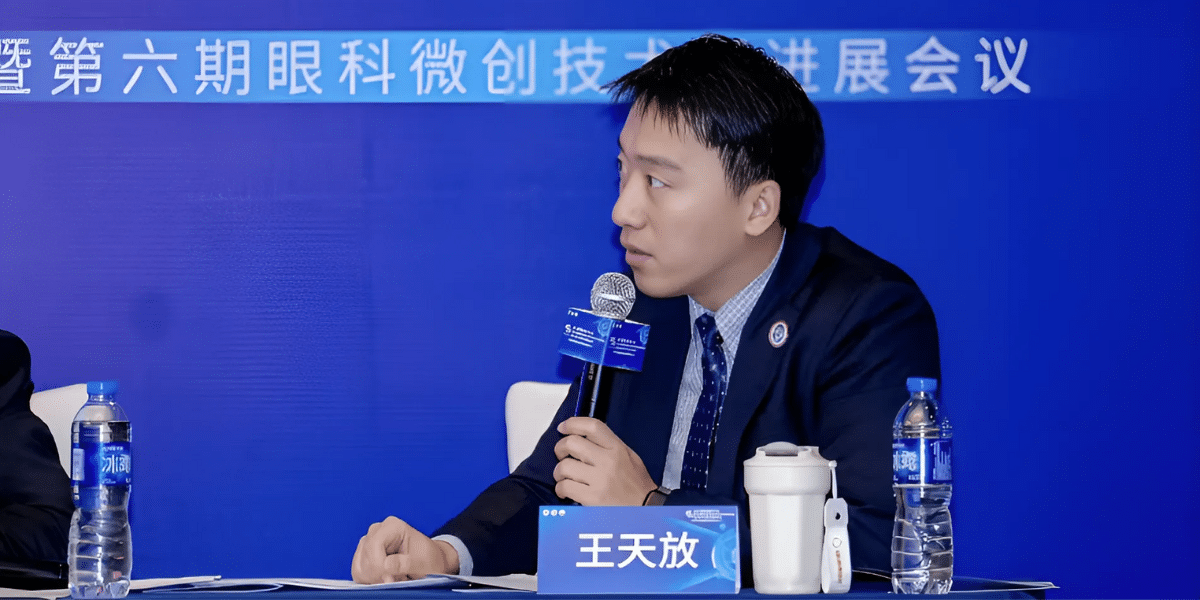By: Jon Stojan
As the global aging process accelerates, the incidence of ophthalmic diseases is rising each year, making eye health a critical topic of global concern. Today, we are thrilled to speak with the renowned entrepreneur and founder of Super Vision Technology, Tianfang Wang. Before we dive into the details, please briefly introduce yourself to our curious readers.
A: Hello, everyone! I’m Tianfang Wang, founder of Super Vision Technology. It’s a pleasure to be here. Our company’s mission is to contribute to the field of ophthalmology through technological innovation, focusing on efforts to help enhance patient care and well-being globally. I hope this interview will provide insights into our innovative journey and commitment to advancing the ophthalmic medical device field.
Q: Why did you choose the field of ophthalmology medical device? How do you think advancements in technology will revolutionize this industry?
A: I chose the ophthalmology medical device market because it represents a vibrant and rapidly evolving field with great potential.
Currently, the global ophthalmic devices market is experiencing significant growth. This growth is driven by several factors: the rising prevalence of eye diseases, the increasingly aging population worldwide [increase in age-related macular degeneration age-related macular degeneration (AMD) ], heightened societal health awareness, and groundbreaking advancements in technologies like artificial intelligence (AI), telehealth and remote monitoring, etc. These technological innovations are reshaping the market and creating opportunities aimed at supporting advancements in patient care and outcomes.
Q: How did the idea for your business come about? Why did you decide to cooperate with the other founders to start your own company?
A: After graduating from Tsinghua University School of Economics and Management, I led investments in several projects within the medical device, pharmaceutical, and medical service industries. Through these experiences, I gained a deeper understanding of the processes involved in developing and managing a medical device venture.
When I was introduced to “Super Vision” and its work on technology related to nystagmus, I became intrigued by its potential to help contribute to advancements in this area.
When meeting with the other two founders of Super Vision, we connected instantly, and I decided to join the company.
Our entrepreneurial team has formed a strong complementary triangle, with each of us bringing different areas of expertise:
– Professor Wang Lejin, our chairman, focuses on the company’s product strategy, emphasizing academic and clinical needs.
– Our CTO, Professor Wang Wensi from Beijing University of Technology, is an expert in integrated circuits and oversees product technology implementation.
– As CEO, I am responsible for the company’s commercialization and overall daily operations.
Q: How do you set your business apart from others in your industry?
A:
- Driving Innovation
At the heart of entrepreneurship is the pursuit of innovation. While breakthroughs in scientific and technological achievements are fundamentals to human progress. We aim to utilize technological advancements to address clinical challenges in ophthalmology, working toward innovative approaches that may contribute to the evolution of medical practices.
2. Fostering Talent Growth
We believe in nurturing talent to drive our success. Our company brings together professionals from various fields, such as artificial intelligence, healthcare, and biomedicine. With the combined expertise of our team, we focus on supporting doctors, addressing medical challenges, and contributing to patient care.

Q: Could you introduce the core research product i-NYS and explain how it helps patients with nystagmus? What inspired its development, and is there any particular story behind it?
A: i-NYS is an innovative implantable eye muscle-nerve stimulator specifically designed to help treat nystagmus. Nystagmus refers to involuntary, rhythmic back-and-forth eye movements. It can be congenital, but it is not always caused by genetic mutations. This condition may severely impact daily life, as some patients develop amblyopia, seeing the world in a blur. In more severe cases, individuals may struggle with attending school and face challenges in work and everyday activities as adults.
Based on years of clinical surgical experience, Professor Wang Lejin noted that existing nerve stimulation technologies aim to interact with and influence neural activity. Inspired by these advancements, our team began investigating the potential of electrical stimulation for eye muscles to combat nystagmus. Applying electrical stimulation to the eye muscles may help manage nerve impulses, potentially targeting the underlying factors contributing to the tremors.
Q: Where do you see your company in 5 years?
A: Over the next five years, our work will focus on advancements in high-end ophthalmology medical devices designed to address clinical challenges. Additionally, we plan to expand our efforts by exploring integrated circuit technology and human health data platforms.
Disclaimer: This article is for informational purposes only and is not intended to provide medical advice, diagnosis, or treatment. Any medical decisions should be made in consultation with a qualified healthcare professional. The device mentioned is subject to regulatory approvals, and its effectiveness may vary depending on individual circumstances. Readers are advised to consult their doctor or healthcare provider before making any decisions based on the content of this article.
Published by: Khy Talara

















